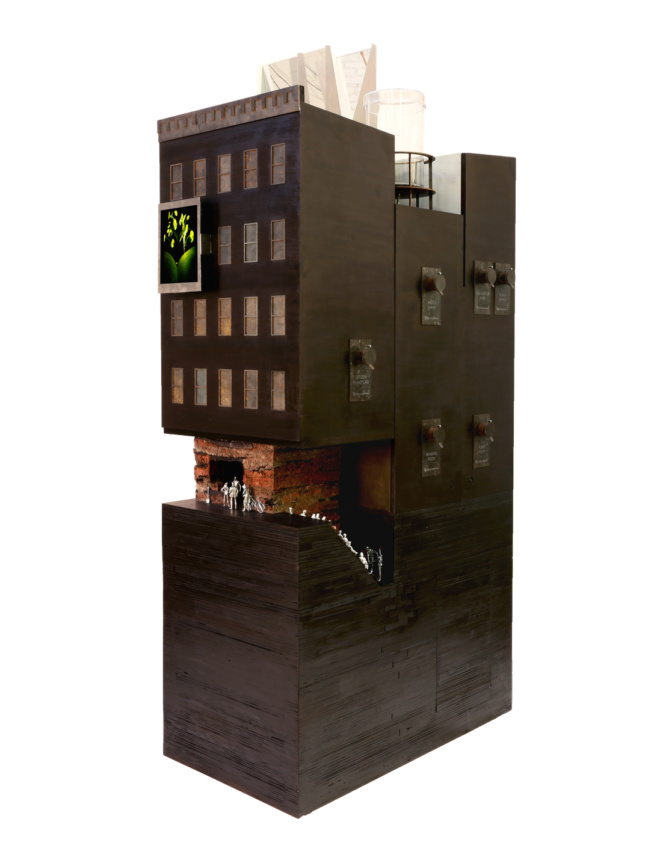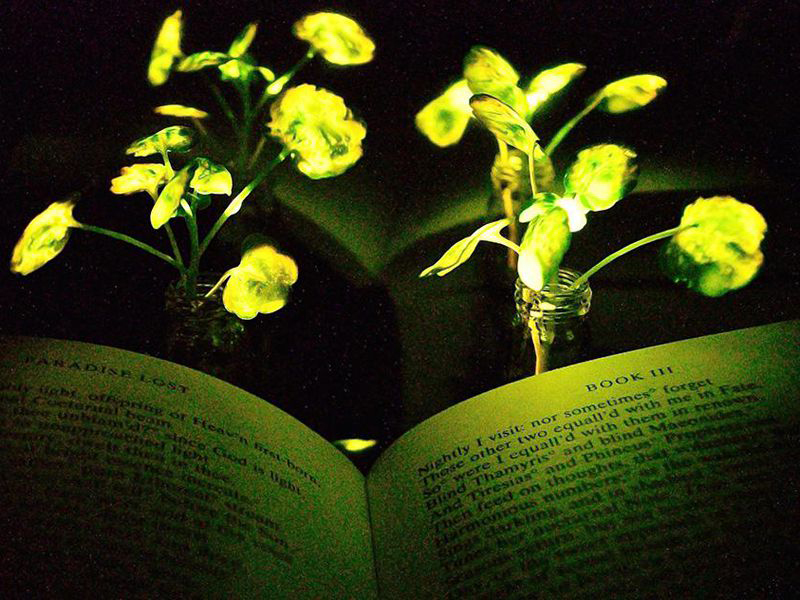Could the solution to more sustainable buildings be what’s planted in and around them? Researchers at MIT have discovered a way to turn plants into sources of light and are imagining a new conception of architecture that would integrate them into everyday spaces as a more sustainable alternative to electric lighting.
In 2017 MIT chemical engineer Michael Strano devised a method to make plants glow without genetic modification. Plants are submerged in a solution filled with nanoparticles that have been enriched with an enzyme called luciferase, which is what allows creatures like fireflies to give off light. High pressure is added to push the nanoparticles through the pores of leaves. While the techniques have grown in efficiency over the past two years, researchers are currently working to devise nano-capacitors that will store light and allow it to give off illumination over time, as well as adapting the technology for larger plants such as trees.
Strano partnered up with MIT professor and Kennedy & Violich Architecture partner Sheila Kennedy to imagine how the technology could shape the built future. Rather than treating the light-up plants as “just another light bulb,” the team wanted to think critically about how plants fit into architecture more broadly.
Modern thinking on architecture, Kennedy explained to the MIT Architecture blog, has largely hidden away or hyper-managed everything from sunlight to waste composting. In an architecture that puts people face-to-face with their environment by integrating organic systems, people would have to confront the environment and their impact on it. These glowing plants are a non-toxic, non-fossil fueled lighting system that doesn’t rely on massive infrastructure. “People don’t question the impacts of our own mainstream electrical grid today. It’s very vulnerable, it’s very brittle, it’s so very wasteful and it’s also full of toxic material,” she told the MIT blog. “We don’t question this, but we need to.” Kennedy went on to say that lighting accounts for as much as 20 percent of global energy consumption. This then becomes an architectural problem, as infrastructure has to be designed to accommodate lighting as part of an “internal ecosystem.”

New Yorkers can see a version of the project at the Cooper Hewitt Smithsonian Design Museum where Strano and Kennedy have devised an installation that imagines a New York tenement built around a light-up plant as part of the Design Triennial.
